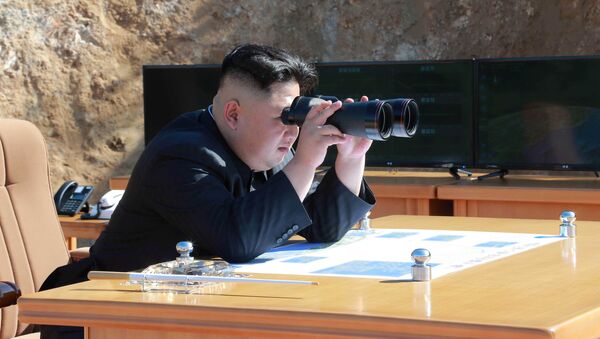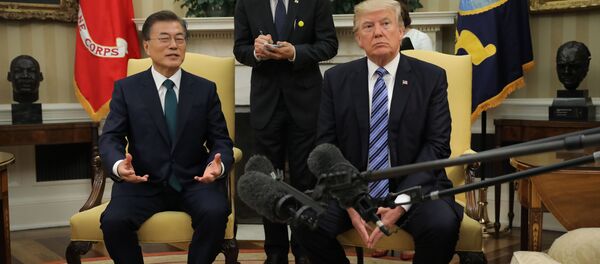On Wednesday, the Pyongyang-based Korean Central News Agency (KCNA) announced the Democratic People's Republic of Korea (DPRK) had successfully tested a "new tactical guided weapon" — an event years in the making that carried a "very weighty significance."
KCNA was short on details, saying only that the missile has a "peculiar mode of guiding flight" and "a powerful warhead."
"We see it as a guided weapon for the purpose of ground battles," an officer from South Korea's Joint Chiefs of Staff told Yonhap News Agency Friday, adding it does not appear to be a ballistic missile.
The US agreed, with acting Defense Secretary Patrick Shanahan saying the weapon was "not a ballistic missile" because no observation or early warning system had detected that kind of launch.
"I don't think there's any reason to come out and raise or condemn or make hay of this weapons test," Shanahan said Friday. "It's wise for us to just sort of continue to focus on making headway on diplomacy and ignore those sorts of comments."
Eric Brewer, a former director for counterproliferation at the National Security Council, told CNN the test was "not that concerning," but was probably meant to pressure Washington into returning to the negotiating table.
Citing analysts, Yonhap said the weapon is probably similar to the Israeli-made Spike anti-tank guided missile (AGTM), a highly sophisticated weapon that can be fired from a vehicle mount or from a soldier's shoulder and has a range of about 4 kilometers.
If it is an AGTM on the scale of the Spike, it likely represents a significant leap forward for North Korean ground forces in terms of anti-tank weaponry. Like much of its weaponry and vehicles, the Korean People's Army mostly makes use of old Soviet anti-tank weapons like the 9M113 Konkurs and the newer, Russian-made 9M133 Kornet.
It remains unclear if this weapon is the same one KCNA reported Kim inspected last November, which the state-owned news agency noted had been "researched and developed for a long time," since Kim's father and predecessor, Kim Jong Il, ran the country between 1994 and 2013.
DPRK hasn't tested a ballistic missile of any type, whether for weapons delivery or satellite launch, since November 28, 2017. As a gesture of goodwill, Kim placed a moratorium on all ballistic and nuclear tests in a bid to bring Washington to the negotiating table that was ultimately successful last June.






